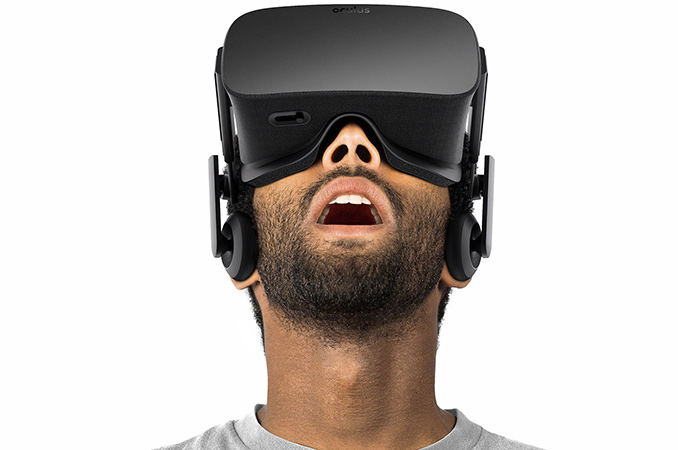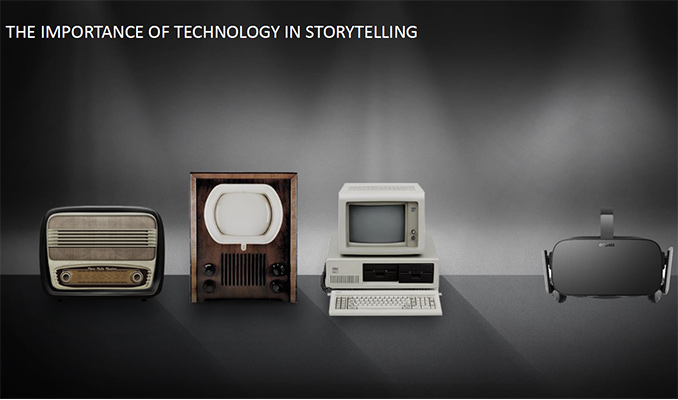AMD and the Associated Press Team Up for Experimental 360° Video & VR News Channel
by Anton Shilov on February 18, 2016 10:00 AM EST
This week AMD and Associated Press have announced a new collaborative project designed to fuel virtual reality journalism. Under the agreement, AP has created a special channel with 360° video and VR content, whereas AMD will provide the news agency appropriate hardware and software tools to create the content. The partnership could bring virtual reality closer to the masses.
The Associated Press news agency was established in 1846 by five newspapers from New York in a bid to share their costs of news coverage of the Mexican-American war. While AP is primarily known for its standards of accuracy, neutrality, and integrity, the organization was an early adopter of multiple emerging technologies to distribute news content. In 1899, the AP used radio to transmit the results of the America’s Cup yacht race; in 1935 the AP established the WirePhoto network, which transmitted news photographs over telephone lines; in the late 1980s, the AP helped to refine Kodak’s first digital cameras and began their usage; in 2006 the organization was among the first major news-outlets to join YouTube. Today, AP believes that 360° video and VR technologies could be the next big thing in journalism.
This week AP opened up its new 360° Videos and Virtual Reality channel to demonstrate what is possible to do using new technologies that essentially put viewers in the middle of the action, allowing them to experience an event from inside despite of physical barriers. By producing 360° and VR content, AP journalists will learn how to better use the new technologies and whether it makes sense to use them at all.
At present, the web site only contains 360° 2D videos and images that can be viewed using a compatible browser, a smartphone, or a VR headset with the help of the Ryot app (for Android or iOS). Eventually, AP’s 360° Videos and Virtual Reality channel will get 3D VR content developed and post-processed using AMD’s LiquidVR software development environment as well as Radeon or FirePro graphics cards. The channel itself is highly experimental, hence, content will be available across multiple platforms ranging from the Samsung Gear VR to the Oculus Rift and the HTC Vive. Right now, AP does not set any technical standards for its 360° videos and VR channel; there are no minimum requirements for resolution, level of details and so on. Many pieces of content will be available on all major platforms, but some will be limited to fully-fledged VR headsets (e.g., the Oculus Rift and the HTC Vive).
For AMD, AP’s 360° Videos and Virtual Reality channel is a way to promote its LiquidVR software as well as GCN GPUs. In addition, AMD will learn through real-world field testing how good its technologies are for VR content creation. If the channel becomes popular among early adopters of virtual reality headsets or among those, who will watch 360° videos using their mobile devices, AMD’s Radeon brand will gain some additional recognition.
360° video and VR technologies for news reporting and documentaries could useful on some occasions. For example, when you need to show excitement of the crowd at a major sport, political or product launch event. However, in many cases typical photos will just do their job for the vast majority of people. Moreover, if we are talking about VR for the masses, we need to keep in mind motion sickness sometimes caused by contemporary VR headsets, which is something that will limit adoption of the technology in general.
Finally, in their announcement the AP notes that their editors will have complete control over the editorial content presented via the new virtual reality channel, which means that we could see very creative way of using 360° video and VR technologies for journalism. Medium is a major thing in story telling. The VR360 channel from AP might just show whether virtual reality is the medium for next-generation journalism or not.
Source: AMD











24 Comments
View All Comments
rabidpeach - Thursday, February 18, 2016 - link
mmmmm.... nostrils .... mmmmmBrokenCrayons - Friday, February 19, 2016 - link
It looks like someone edited the photo to remove nostril hairs and any foreign material from the visible portions of the nasal cavity. Despite that effort, I think the image is pretty unappealing. It's almost as it the people who made it are mocking those who will end up buying into VR technology for entertainment.BrokenCrayons - Friday, February 19, 2016 - link
Bwa ha! That's hilarious!=^..^=
nunya112 - Saturday, February 20, 2016 - link
Has just been delayed #HeyItsAMD#AMDAlwaysDelayed #Rebranded.
smart aleck aside. AMD needs to stop with all this. and get its products out faster. if AMD has dedicated wafer capacity, and a good 14/16nm yield. it should be out already. Instead they are still elf sabotaging at every step of the business
Fury and Fury X barely 15% better than 390, sorry 290. the dual Fiji that is so damned late. is only 10-15% faster than the current 295 X2